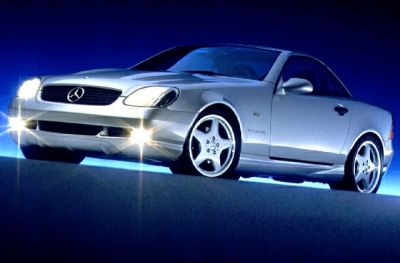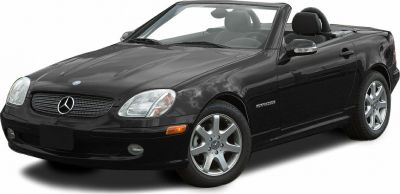 2001 Audi TT Roadster (8N, facelift 2000) Dimensions, Size & Specs
2001 Audi TT Roadster (8N, facelift 2000) Dimensions, Size & SpecsMeasurements of the 2001 Audi TT Roadster, engineered for optimal performance and comfort
| Dimensions | |
|---|---|
| Length: | 4041 mm159.1 in13.3 ft |
| Width: | 1764 mm69.4 in5.8 ft |
| Height: | 1349 mm53.1 in4.4 ft |
| Trunk Capacity: | 180-220 liter6.4-7.8 cu ft |
| Trunk Capacity (Max): | 180-220 liter6.4-7.8 cu ft |
| Weight Specifications | |
| Curb Weight: | 1335-1590 kg2943-3505 lbs |
| Maximal permitted Weight: | 1635-1890 kg3605-4167 lbs |
| Tire Specifications | |
| Rims Sizes: | 16-inch rims:
|
| Tire Sizes: |
|
The Audi TT Roadster (8N facelift), produced between 2000 and 2006, is a stylish and compact convertible sports car that combines sharp design with agile performance. The 2001 model year represents a mid-cycle update to Audi's popular TT Roadster, featuring refined styling and improved specifications. Measuring 4041 mm (159.1 inches) in length and 1764 mm (69.4 inches) in width, the TT Roadster offers a balanced size that emphasizes both sporty presence and maneuverability. The vehicle's height ranges between 1348 and 1349 mm (53.1 - 53.1 inches), contributing to its low-slung stance and aerodynamic profile.
Weight varies depending on the engine and equipment, with a curb weight ranging approximately from 1335 kg (2,945 lbs) to 1590 kg (3,505 lbs). Maximum weight capacities extend from 1635 kg (3,605 lbs) to 1890 kg (4,168 lbs), reflecting the car's solid build and sporty components. The roadster also features practical storage space for a convertible at its class, with a luggage capacity ranging from 180 to 220 liters (6.4 to 7.8 cubic feet), which remains consistent even when the rear seats are folded, underscoring efficient interior packaging.
Rolling on wheels sized between 7J x 16 and 7.5J x 17 rims, fitted with tires sized 205/55 R16 or 225/45 R17, the TT Roadster ensures sporty handling and grip. These rims and tires aid in delivering the car's precise handling characteristics and road feel, perfectly aligned with its compact sports car credentials. Overall, the Audi TT Roadster (8N facelift) 2001 is a well-proportioned, lightweight convertible, offering a fun and spirited driving experience with the added versatility typical of small roadsters. Its compact dimensions and efficient use of space make it a competitive choice for enthusiasts seeking a stylish droptop with a strong technical foundation.
Discover the standout features that make the 2001 Audi TT Roadster a leader in its class
Have a question? Please check our knowledgebase first.
The Audi TT Roadster (8N, facelift 2000) measures 4041 mm (159.1 inches) in length, 1764 mm (69.4 inches) in width, and varies slightly in height between 1348 mm to 1349 mm (53.1 to 53.1 inches). These compact dimensions contribute to its agile and sporty roadster profile, favoring nimble handling and city-friendly maneuverability while maintaining a sleek low stance that is characteristic of the TT line during this generation's 2000 to 2006 production period.
Yes, the Audi TT Roadster (8N, facelift 2000) fits comfortably within a standard residential garage. With a length of about 4.04 meters (159.1 inches) and a width of 1.76 meters (69.4 inches), it is compact enough for typical garage dimensions which usually exceed 5 to 6 meters in length and 2.4 to 3 meters in width. Its height of approximately 1.35 meters (53.1 inches) ensures ample vertical clearance. The car's modest footprint also makes it easy to maneuver inside confined spaces, making it ideal for owners with typical single or double garage spaces.
The curb weight of the Audi TT Roadster (8N, facelift 2000) ranges from 1335 kg to 1590 kg (2945 to 3507 lbs), depending on trim and equipment. This relatively lightweight construction enables an agile driving experience with quick acceleration and responsive handling, especially important for a roadster designed for sporty performance. The variation in weight correlates with different engine options, drivetrain setups, and additional features, but overall, the TT Roadster balances lightness with structural rigidity to offer a dynamic yet stable ride.
The luggage capacity of the Audi TT Roadster (8N, facelift 2000) remains consistent whether the rear seats are folded or not, ranging between 180 to 220 liters (6.4 to 7.8 cubic feet). This relatively modest capacity is typical for a compact two-door convertible roadster, focused more on sporty driving than cargo space. The interior packaging maximizes what little space is available, but potential buyers should expect limited luggage room primarily suitable for small bags or a couple of weekend bags, rather than large or bulky luggage.
The Audi TT Roadster (8N, facelift 2000) offers a range of tire and rim sizes depending on the trim and year specifications. Standard rims include 7J x 16 inches and 7.5J x 17 inches options. Tire sizes compatible with these rims are 205/55 R16 and 225/45 R17. These sizes provide a balance of sporty performance, handling precision, and ride comfort suitable for a compact roadster. Larger rim and tire sizes, such as the 7.5J x 17 inch wheels, typically enhance cornering grip and visual appeal but may slightly impact ride softness.
The Audi TT Roadster (8N, facelift 2000) has a width of 1764 mm (69.4 inches), which is slightly wider compared to its predecessor, the original TT Roadster released in 1999 before the facelift. This increase in width enhances stability and road presence without compromising maneuverability in urban environments. When compared to similar compact roadsters from the era, such as the BMW Z3 or the Mazda MX-5 Miata, the Audi TT offers a comparable or slightly wider stance, which aids in delivering confident handling and a planted feel on the road.
The height of the Audi TT Roadster (8N, facelift 2000) is approximately 1348 to 1349 mm (53.1 inches), contributing to a low-slung and aerodynamic silhouette. This low height improves airflow over the body, reducing drag and enhancing high-speed stability while maintaining the sporty aesthetics typical of roadsters. However, the lower roofline also means a cozy cabin environment with limited headroom, especially for taller occupants. The design strikes a balance between aerodynamic efficiency and driver/passenger comfort for an engaging driving experience typical of compact convertibles.
The Audi TT Roadster facelift of 2000 (8N) is an evolution of the original 8N TT launched in 1998/1999. While maintaining the iconic rounded and minimalist design language, the facelift introduced subtle exterior updates including revised headlights, taillights, and interior enhancements that refined the driving experience. Dimensionally, the facelift TT retained similar length (4041 mm) and width (1764 mm) but benefited from improved chassis tuning for better handling and ride comfort. Overall, the facelift TT is viewed as a refined, sportier version of the first-generation TT, enhancing usability and performance without drastic dimensional changes.
Compared to competitors like the BMW Z3, Porsche Boxster (early generations), and Mazda MX-5 Miata, the Audi TT Roadster (8N, facelift 2000) stands out with its distinctive German design, Quattro all-wheel-drive option on some models, and a slightly more hatchback-like rear design offering a modest advantage in luggage capacity. Dimensionally, the TT is compact with a length of 4041 mm, a width of 1764 mm, and a low height of around 1348 mm, placing it in the same class but with a sportier and more rigid feel. Performance-wise, it combines a responsive chassis with a choice of turbocharged and naturally aspirated engines, delivering solid acceleration and engaging handling in a uniquely styled package.
The curb weight of the TT Roadster, ranging from 1335 to 1590 kg (2945 to 3507 lbs), reflects variations depending on engine choice, drivetrain, and options. Lighter variants benefit from enhanced agility, quicker throttle response, and better fuel economy due to less mass to move. Heavier versions, while slightly less efficient, typically add more equipment or all-wheel drive capability, which improves handling and traction. The balance between weight and power plays a crucial role in driving satisfaction, making the TT Roadster a nimble yet stable road car designed for spirited driving with practical fuel consumption within its class.
Discover similar sized cars.

| Production: | 1996-2000 |
|---|---|
| Model Year: | 1996 |
| Length: | 3995 mm157.3 in |
| Width: | 1715 mm67.5 in |
| Height: | 1284 mm50.6 in |

| Production: | 1998-2000 |
|---|---|
| Model Year: | 2000 |
| Length: | 4041 mm159.1 in |
| Width: | 1764 mm69.4 in |
| Height: | 1349 mm53.1 in |

| Production: | 2000-2004 |
|---|---|
| Model Year: | 2000 |
| Length: | 4010 mm157.9 in |
| Width: | 1950 mm76.8 in |
| Height: | 1269-1279 mm50.0-50.4 in |
